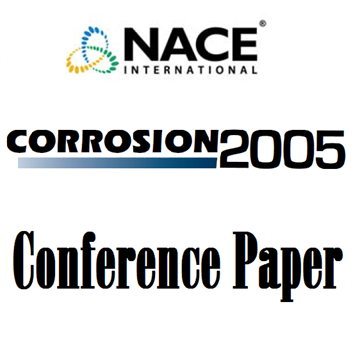Iron count: (mg/L) or ppm (mg/kg). With varying amounts of water, iron production rate: (lb/day [kg/day]). Iron production rates can indicate corrosion upstream or downhole from the sampling point.
Historical Document 1992
Product Number:
53087-HD1992
Author:
NACE International
Publication Date:
1992
$179.00
$179.00
$179.00
1.1 The anomalies experienced when using iron counts as a monitor for corrosion result mostly from the varying, usually uncontrollable, conditions found in nearly every production system. Since the term iron count refers to the iron content of water expressed as milligrams per liter (mg/L) or ppm (mg/kg), it must be specified if the iron content is based on the total fluid produced and if the iron is reported as soluble iron, ferrous iron, or total iron. The exact method of sampling and sample treatment required to separate and analyze for ferrous, ferric, soluble, and total iron content of a water sample is described in the analytical procedures cited in the reference section of this document. If techniques are employed to analyze for the individual species of iron, the final report must indicate the form of iron being reported. If only the typical total acid soluble iron content is determined, the final report should indicate that the result is "Total Iron." The usual oilfield iron count is total iron content of an acidized sample. In order to use iron counts to monitor corrosion trends, the same species must be determined consistently for a given sampling point in a system. For comparison of systems producing varying amounts of water, a more meaningful tool is the iron production rate that takes into consideration the water flow rate at the time of sampling. The iron count is converted to an iron production rate usually expressed in pounds of iron per day (lb/day [kg/day]).
1.2 The mechanical arrangement, physical conditions, and chemical environment in nearly every system or part of a system must be evaluated under comparable conditions before the iron content of each sample can be correctly interpreted. The iron counts measured will not be of any value if these variables are not considered in the interpretation.
1.3 Iron counts as a monitoring method can be done easily, inexpensively, and quickly in the field. Iron production rates, unlike coupon corrosion rates, can give some indication of corrosion upstream or downhole from the sampling point. Iron counts are useful where surface monitoring devices, such as coupons, may not reflect downhole conditions, such as when paraffin forms on coupons. The principal reason for the historical popularity of iron counts as a stand-alone monitoring method is that in many small production facilities other forms of monitoring facilities have not been installed. However, it is preferable to combine iron count measurements with other monitoring techniques whenever possible.
1.4 Generally, iron counts from sulfide-containing fluids will not be reliable because of precipitation of iron sulfide in the system. The use of iron counts as a corrosion monitoring tool must be validated for each specific case.
Historical Document 1992




